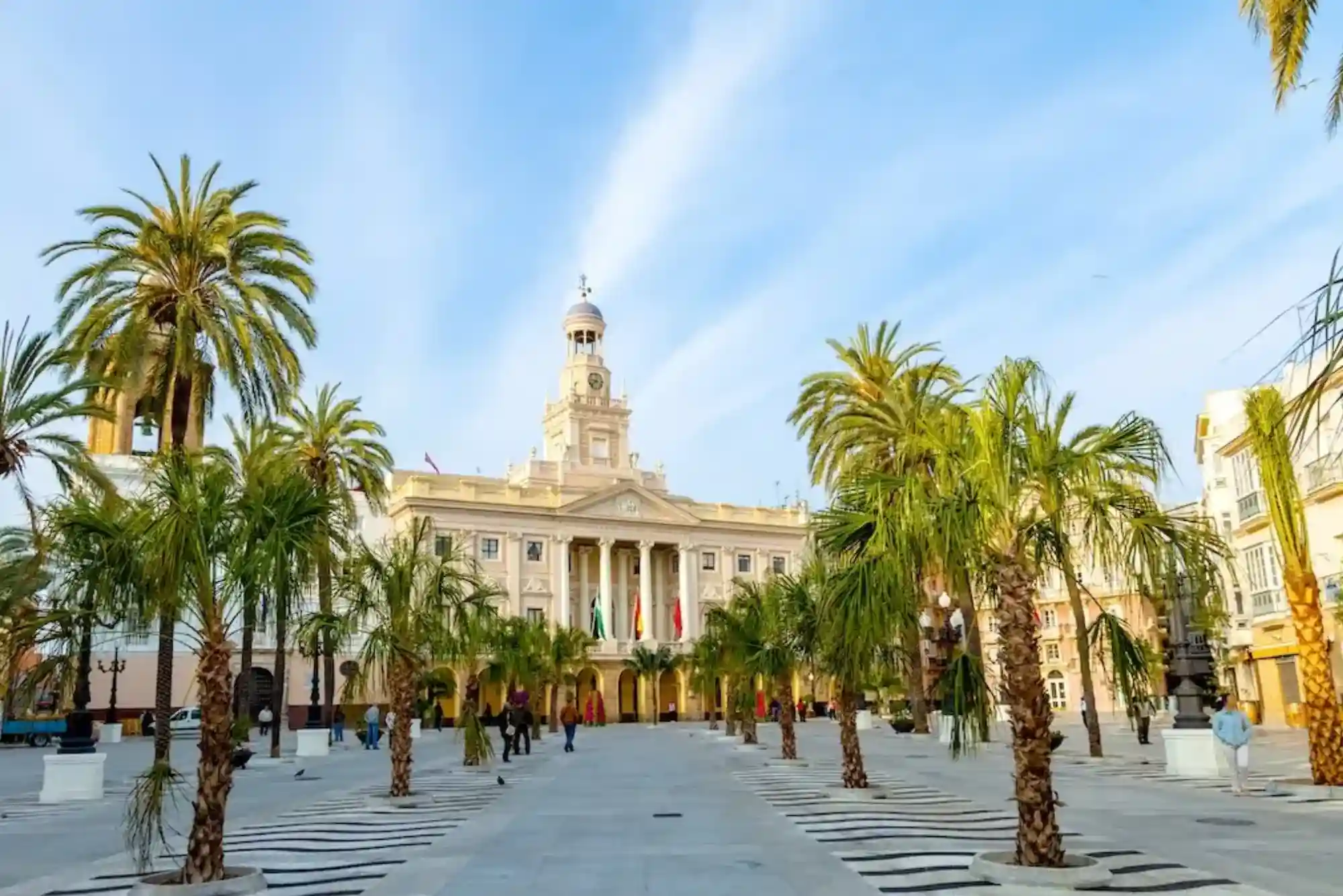The Ancient Beginnings of Cádiz
Cádiz, one of the oldest continuously inhabited cities in Europe, boasts a history that dates back over 3,000 years. Founded by the Phoenicians around 1100 BCE, this coastal gem was originally known as Gadir. Its strategic location on the Atlantic coast made it a vital hub for trade and cultural exchange. The Phoenicians established Cádiz as a trading post, connecting the Mediterranean with the Atlantic, and leaving behind a legacy of maritime prowess and cultural influence.
Roman Cádiz: The Flourishing Port of Gades
Under Roman rule, Cádiz, then called Gades, flourished as a major port city. The Romans recognized its strategic importance and invested heavily in its infrastructure. Amphitheaters, aqueducts, and temples were constructed, many of which still leave traces in the city today. Gades became renowned for its salted fish and garum, a fermented fish sauce highly prized across the Roman Empire. The city’s prosperity during this era is a testament to its enduring significance in the ancient world.
The Moorish Influence on Cádiz
In 711 CE, the Moors conquered Cádiz, bringing with them a rich cultural and architectural heritage. The city became part of the Al-Andalus region, and its Islamic influence is still evident in its narrow streets and intricate designs. During this period, Cádiz served as a vital link between the Islamic world and the rest of Europe, fostering a unique blend of cultures that shaped its identity.
The Age of Exploration and Cádiz’s Golden Era
The 15th and 16th centuries marked a turning point for Cádiz as it became a key player in the Age of Exploration. Christopher Columbus set sail from its shores on his second and fourth voyages to the New World. The city’s port became a bustling hub for ships returning with treasures from the Americas. This era of wealth and exploration solidified Cádiz’s reputation as a gateway to the world.
The 18th Century: Cádiz as a Trade Powerhouse
By the 18th century, Cádiz had become one of Spain’s most important trading cities. The establishment of the Casa de Contratación, or House of Trade, centralized Spain’s trade with the Americas in Cádiz. The city’s wealth grew exponentially, and its cosmopolitan atmosphere attracted merchants, artists, and intellectuals from across Europe. This period also saw the construction of iconic landmarks such as the Cádiz Cathedral, a symbol of the city’s prosperity.
The Role of Cádiz in the Spanish Constitution
In 1812, Cádiz played a pivotal role in Spanish history as the birthplace of the country’s first liberal constitution, known as La Pepa. Amidst the Napoleonic Wars, Cádiz became a refuge for Spanish leaders and intellectuals. The city’s resilience and commitment to freedom during this tumultuous time earned it a special place in Spain’s national identity.
The Decline and Revival of Cádiz
Following its golden era, Cádiz experienced a period of decline in the 19th and early 20th centuries. The loss of Spain’s colonies in the Americas and the rise of other ports diminished its prominence. However, the city’s rich history and cultural heritage have ensured its revival as a tourist destination. Today, visitors can explore its historic sites and immerse themselves in its vibrant culture through a Free tour Cádiz.
Modern Cádiz: A Blend of History and Culture
Modern Cádiz is a city that seamlessly blends its historical roots with contemporary charm. Its picturesque beaches, lively festivals, and delicious cuisine make it a must-visit destination. The city’s Carnival, one of the most famous in Spain, showcases its vibrant spirit and creativity. Walking through its streets, one can feel the echoes of its storied past while enjoying the comforts of modern life.
The Architectural Marvels of Cádiz
Cádiz is home to a wealth of architectural treasures that reflect its diverse history. From the Roman Theater to the Moorish-inspired Torre Tavira, each structure tells a story of the city’s evolution. The Cádiz Cathedral, with its stunning baroque and neoclassical design, stands as a testament to the city’s enduring legacy. Exploring these landmarks on a Free walking tour Cádiz offers a unique perspective on its rich heritage.
The Maritime Legacy of Cádiz
As a city surrounded by water, Cádiz has always been deeply connected to the sea. Its maritime legacy is celebrated in the Museo del Mar, where visitors can learn about its role in naval history and exploration. The city’s port remains a vital part of its economy, connecting it to the world and preserving its seafaring traditions.
The Lessons of Cádiz’s History
The history of Cádiz offers valuable lessons about resilience, cultural exchange, and the importance of embracing change. From its Phoenician origins to its modern revival, the city has continually adapted to the challenges of each era. Its story is a reminder of the enduring power of human ingenuity and the richness of cultural diversity.
Conclusion: The Timeless Appeal of Cádiz
Cádiz is more than just a city; it is a living testament to the passage of time and the resilience of its people. Its history, marked by triumphs and challenges, offers a window into the complexities of human civilization. Today, Cádiz invites visitors to explore its past, celebrate its present, and dream of its future. Whether through a free tour Cádiz or a leisurely stroll along its beaches, the city promises an unforgettable journey through time.








